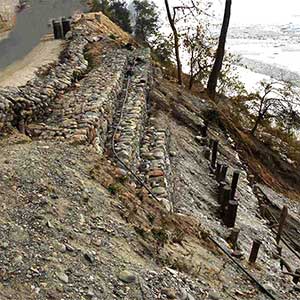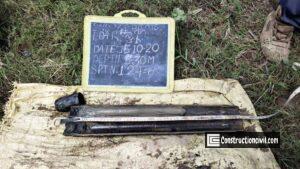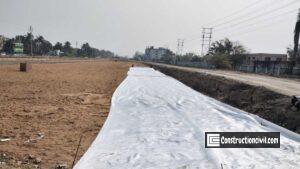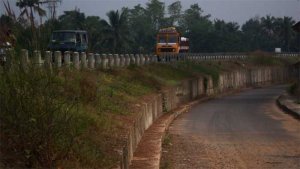what are Gabions Baskets?
Gabions are evenly partitioned double twisted wire mesh type container. They are interconnected with similar units, to receive hard stones at the project site to form a flexible, permeable and monolithic structure known as gabions wall. Gabions are used for slope stability and erosion protection in Bridge construction and Road Construction projects.
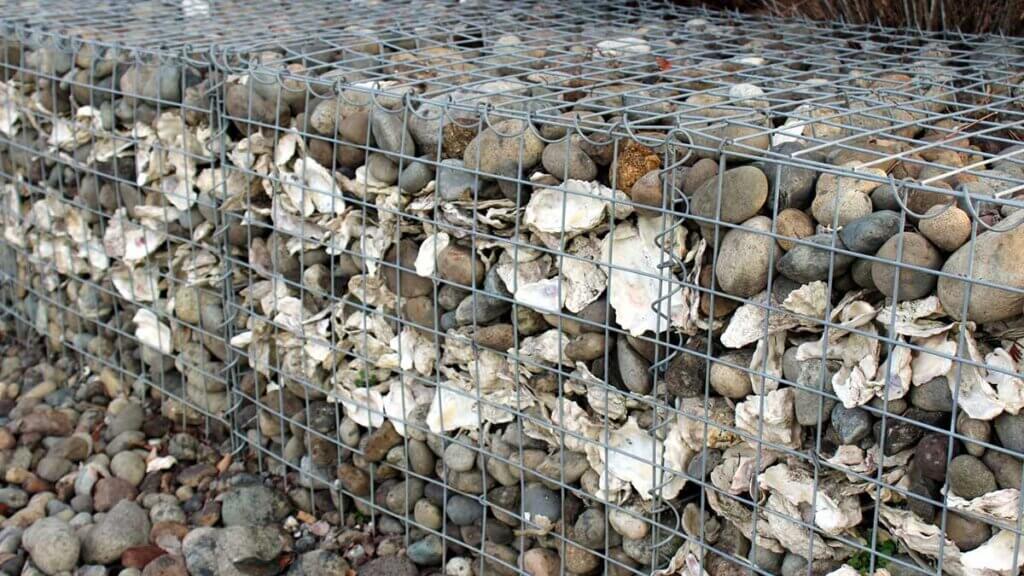
What are Hand Woven Wire Crates?
Wire crates are made from hot-dipped galvanized mild steel wire of diameter not less than 4mm having a tensile strength of 300-450MPa conforming to IS 280. The galvanizing shall be the heavy coating for soft condition conforming to IS 4826. The mesh size of the crate shall not be more than 150mm.

Advantages of Gabions:
- Flexibility: Being highly flexible they are not instantly affected by the event of any settlement in the ground, thus making it suitable for differential settlements.
- Permeability: A high percentage of voids (30%) makes the structure highly permeable hence no uplift pressure develops below the wall. The absence of any hydrostatic or uplift pressure leads to added stability.
- Simplicity in Construction: As work involves packing of the rubble stone of required sizes in the Gabion boxes, work is simple and requires no skilled labour
Components of Gabions:
- Double Twisted Wire mesh: A non-ravelling mesh made by twisting continuous pairs of wires through three one and a half turns (commonly called double twisted) to form hexagonal-shaped openings.
- Selvedge Wire: The final wire used to edge the wire mesh perpendicular to the double twist by mechanically wrapping mesh wires around it at least 2.5 times or by inserting it through the twists and folding one mesh length.
- Edge Wire: A terminal wire is used to edge the wire mesh parallel to the double twist by continuously weaving it into the wire mesh
- Diaphragm: An internal Partition made of double twisted wire mesh panel that is attached to the bottom to the bottom of, side and lid
- Bracing Wire: Length of galvanized wire used for support of facing by connection the front panel with the back panel
Properties of Gabion Wire:
- Minimum Tensile Strength 350Mpa
- Minimum Diameter 2.20mm
Coating of Gabion Wire:
Zinc Coating Gabions:
The coating weights of Zinc shall conform to the requirements of IS 4826. The minimum mass of Zinc coating of different wire sizes are as follows:
| Nominal Diameter of galvanizes wire (mm) | Mass of Zinc Coating (gm/m2) |
| 2.00 | 240 |
| 2.20 | 240 |
| 2.40 | 260 |
| 2.70 | 260 |
| 3.00 | 270 |
| 3.40 | 270 |
| 3.90 | 280 |
Zinc and PVC Coating Gabions:
- Specific gravity: Specific gravity shall be in the range of 1.30 to 1.35 when tested in accordance with test method IS 13360: Part3 Sec 1
- Tensile strength: Tensile strength shall have a minimum value of 20.6MPa when tested in accordance with test method IS 13360: Part5 Sec 1
- Hardness: Hardness shall be between 50 and 60 Shore D in accordance with the test method IS 13360: Part5 Sec 11
- The resistance of PVC Coating to Sodium Chloride Solution: There shall be no loss of PVC

Quality Control of Gabion:
- Galvanizing weight, PVC coating thickness and tensile strength shall be verified by the wire producers for conformance to the requirements.
- Minimum of three tests each for conformance of strength of galvanized steel wire mesh parallel to twist, and perpendicular to the twist shall be performed.
- Tensile Strength test of the panel
- Punch Test
- Zinc /PVC Coating thickness
Gabion Wall Construction:
- Gabions are delivered at the worksite in bundles along with the tie wire. Bundles must be unloaded using any available machine and be stored close to the site where they are to be installed.
- Unfold each gabion over an even, hard surface (compact ground). Correct all unevenness, making sure that gabion is properly assembled and wired together. In this way, we can make sure that the final dimensions of gabions will be as close as possible.
- Fold all side panels so that a box is formed; tie the upper corner of each pair of side panels using the thicker wires you find at those corners.
- Tie the fastening wire on the lower side of the gabion edges and of the existing diaphragms, sewing from bottom to top with single turns and with double turns every mesh (10 cm).
- Transport already assembled gabion to its correct position in the structure.
- Place the gabions in the right position together with the ones already in position and tie them into groups using the lacing wire.
- For a better appearance, after having placed a number of gabions in position, and before filling them, rods may be used to strain the front face before fastening them in position using suitable devices.
- The filling is then carried out with flints or stones of a larger dimension than that of the mesh opening (so that the rocks do not escape from inside the gabions) making sure that the void content is minimum. Breakable, soluble or swelling material must be avoided for this purpose, and it is advisable to use dense material of high specific weight. For a better finish, the stone fill to the front face is placed carefully to give the best appearance.
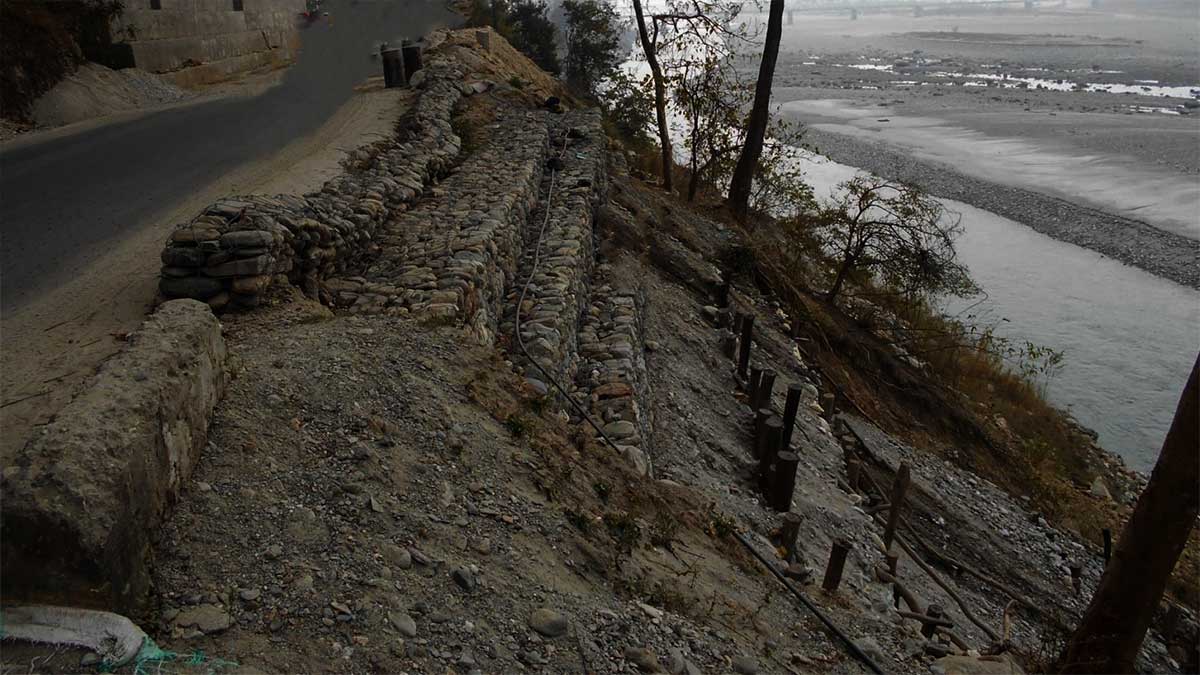
Backfilling Behind Gabion Wall:
- Compaction of backfill must be done simultaneously with every row of Gabion Wall Construction.
- Utmost care must be taken not to damage the geotextile during placing and compaction of backfill material.
- Heavy compaction equipment should not be permitted within 2.0m of the gabion basket.
- Small handheld compaction equipment may be used adjacent to the gabion basket.
Gabion Wall Construction Failures:
It is to be noted that the gabion wall is designed considering the porous behaviour.
- It is observed that in many locations along with highway projects, the gabion wall is covered with shotcrete to protect the Gabion wall from vandalism.
- The shotcrete will make gabion wall non-porous, and this will result in the build-up of pore water pressure behind the wall, and this will result in the ultimate failure of the gabion wall.
